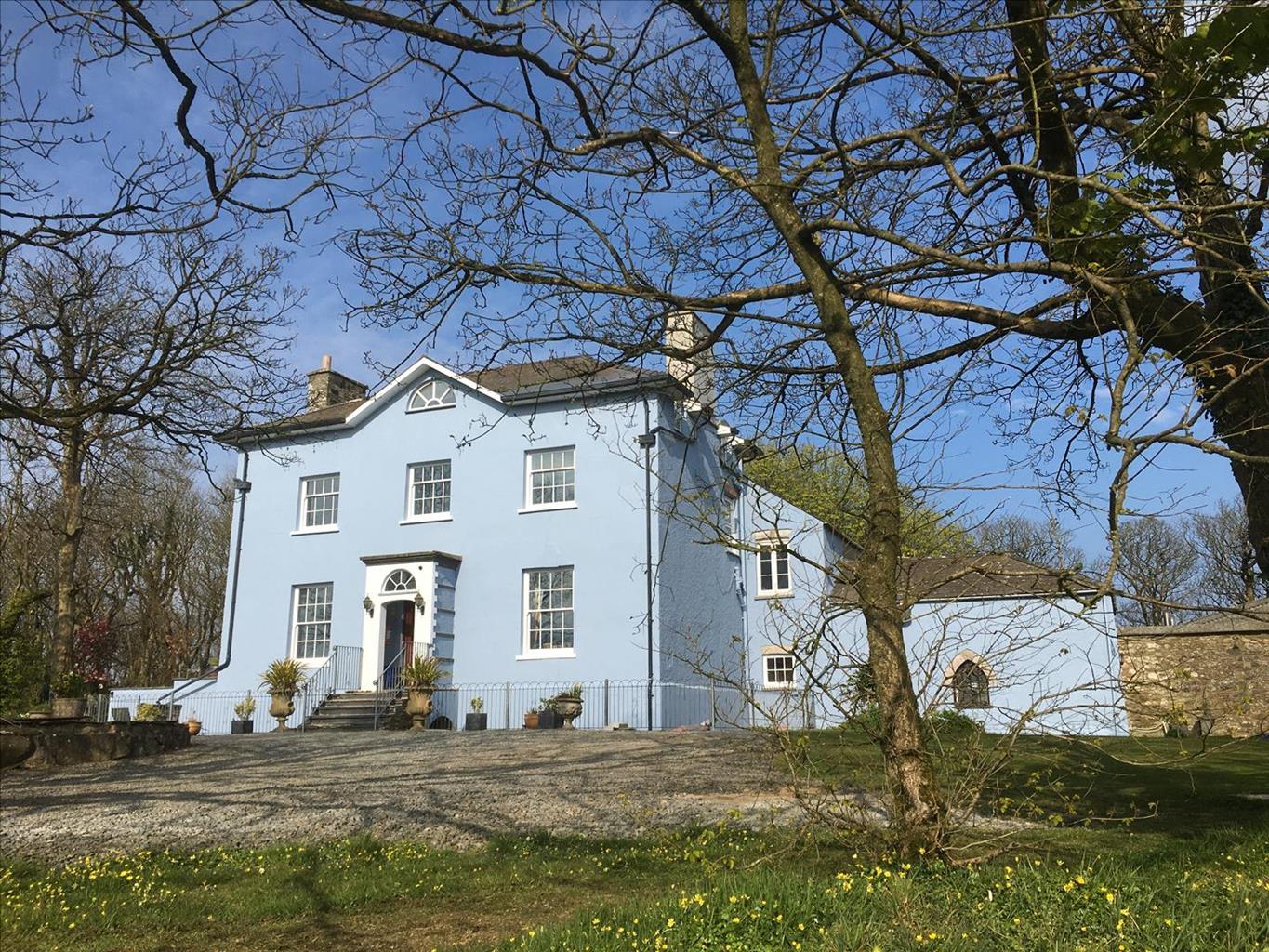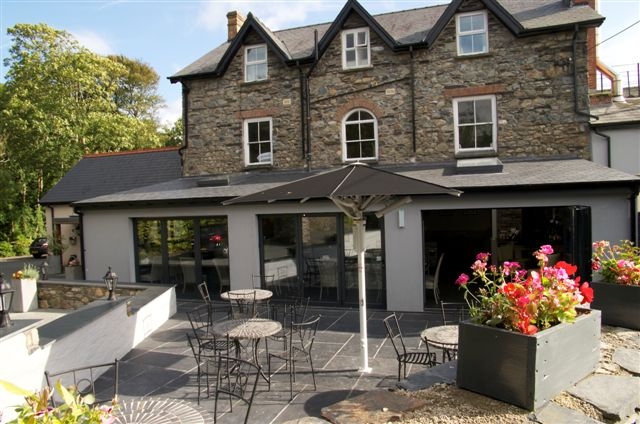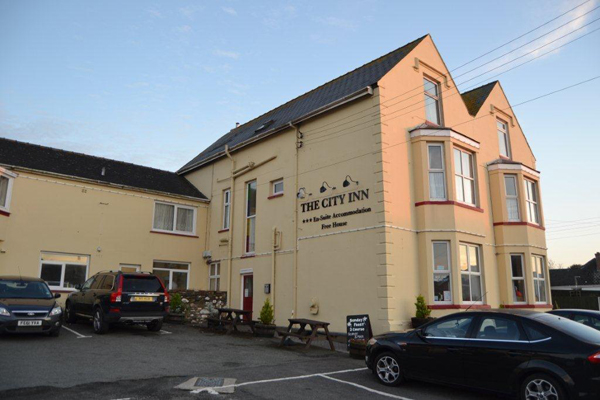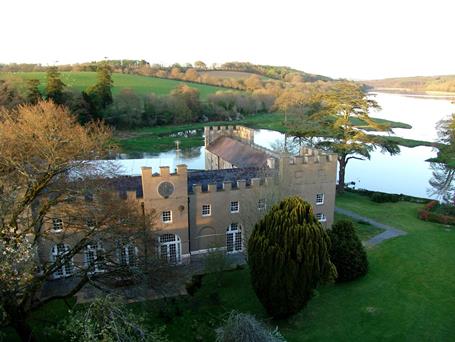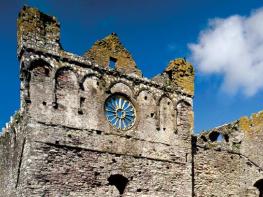Set high up on cliffs with outstanding views of Fishguard Bay, this site has the Pembrokeshire…
Around Strumble Head

A walk in some of the wildest countryside of the Pembrokeshire coast.
8 miles (12.9kms)
About the walk
This is a wonderful stretch of the Pembrokeshire coast, although at times it feels like ‘coast path meets the Himalayas’, as the narrow ribbon of trail climbs and drops at regular intervals throughout. This is the real wild side of Pembrokeshire.
The headland cliffs tower above the pounding Atlantic surf, the path cuts an airy, at times precarious, line across their tops and the sky is alive with the sound of seabirds. Atlantic grey seals, porpoises and even dolphins are regularly spotted in the turbulent waters. Garn Fawr, a formidable rocky tor that lords it high above the whole peninsula, brings a touch of hill walking to the experience, and the shapely lighthouse flashes a constant reminder of just how treacherous these spectacular waters can be.
Built in 1908 to help protect the ferries that run between Fishguard and Ireland, the Strumble Head Lighthouse guards a hazardous stretch of coast that wrecked at least 60 ships in the 19th century alone. The revolving lights, which flash four times every 15 seconds, were originally controlled by a massive clockwork system that needed rewinding every 12 hours. This was replaced in 1965 by an electrically powered system and the lighthouse was then converted to unstaffed operation in 1980. It’s possible to cross the daunting narrow chasm that separates Ynys Meicel (St Michael’s Island), where the lighthouse stands, from the mainland by a rickety bridge.
This is one of the best walks in Pembrokeshire to spot Atlanic grey seals – they can reach over 8ft (2.4m) in length and can weigh as much as 770lbs (350kg). They are usually seen bobbing up and down (bottling) in the water just off the coast, but in autumn when the females give birth to a single pup, they often haul up on to inaccessible beaches where the young are suckled on milk with an incredibly high fat content. The pups shed their white coats after around three weeks, when they are then weaned and taught to swim. The males are usually bigger than the females, with a darker coat and a much more pronounced nose. The best places to see seals on this walk are the bays of Pwll Bach and Pwlluog, near the start.
Walk directions
Walk back up the road from the car park and cross a gate on the left on to the coast path. Pass above the bays of Pwll Bach and Pwlluog, then drop steeply to a footbridge behind the pebble beach of Porthsychan.
Follow the coast path waymarkers around Cnwc Degan and down to another bridge, where a couple of footpaths lead away from the coast. Continue along the coast, passing a cottage on the right and climbing and dropping several times, before you reach the obelisk at Carregwastad Point.
Follow the main path inland and turn right then bear left. Continue with this path, which is vague in places, up through the gorse to a wall, then turn right to walk the length of a field to a stile and go on to a good track. Take this through a succession of gates and around a left-hand bend.
Ignore a track to the right and continue up the cattle track, eventually bearing right into the farmyard where you follow a walkway past livestock pens before swinging left, after the buildings, to the road. Turn right and follow the road past a large house to a waymarked bridleway on the left. Pass Trenewydd and go through a gate on to a green lane. Follow this up to another gate and on to open ground.
Turn right here and follow the wall to yet another gate. This leads to a walled track which you follow to the road. Turn left and climb up to the car park beneath Garn Fawr. Turn right, on to a hedged track, and follow this up, through a gap in the wall, and over rocks to the trig point.
Climb down and follow the path to cross the saddle between this tor and the other, slightly lower, one to the south. From here, head west towards an even lower out-crop and pass it on the left. Continue on this clear path that leads down to a stile. Cross this and turn left, then right on to a drive that leads to the road.
Walk straight across and on to the coast path. Bear right past the youth hostel and cross a stile to drop down towards Ynys y Ddinas, the small island ahead. Navigation is easy as you follow the coast path north, over Porth Maenmelyn and up to a cairn.
Continue along the coast, towards the lighthouse, until you return to the car park.
Additional information
Coastal path, grassy, sometimes muddy tracks, rocky paths, many stiles
Rugged headland, secluded caves and rocky tor
Care needed near cliff tops and livestock
OS Explorer OL35 North Pembrokeshire
Car parks by Strumble Head Lighthouse
None on route
WALKING IN SAFETY
Read our tips to look after yourself and the environment when following this walk.
Find out more
Also in the area
About the area
Discover Pembrokeshire
Wales meets the Atlantic Ocean in spectacular fashion at Pembrokeshire. Unlike the West Country, Pembrokeshire can offer the coast without the crowds, and quaint fishing villages without those huge coach parks. Volcanic eruptions and earth movements have left a tortured rocky coastline of some 160 miles, whose beauty and drama have been recognised by National Park status.
Sometimes known as ‘Little England Beyond Wales’, the county has held a fascination for English visitors ever since the first Norman warlords forced their way in 800 years ago, leaving a string of 50 fine castles in their wake. The anonymous author of The Mabinogion, an 11th-century collection of Welsh folk legends, started it all. His description of the old Celtic kingdom of Dyfed (which encompasses Cardiganshire, Carmarthenshire and Pembrokeshire) as ‘the land of magic and enchantment’ was perhaps the earliest written attempt to sum up the outstanding natural beauty of this wonderful westernmost outpost of Wales. This is a county where you can take it easy on the sandy beaches, make sport out of those Atlantic waves, or discover the mysteries of St David’s or the ancient Preseli Hills.
Nearby stays
Restaurants and Pubs
Nearby experiences
Recommended things to do
Why choose Rated Trips?
Your trusted guide to rated places across the UK
The best coverage
Discover more than 15,000 professionally rated places to stay, eat and visit from across the UK and Ireland.
Quality assured
Choose a place to stay safe in the knowledge that it has been expertly assessed by trained assessors.
Plan your next trip
Search by location or the type of place you're visiting to find your next ideal holiday experience.
Travel inspiration
Read our articles, city guides and recommended things to do for inspiration. We're here to help you explore the UK.

